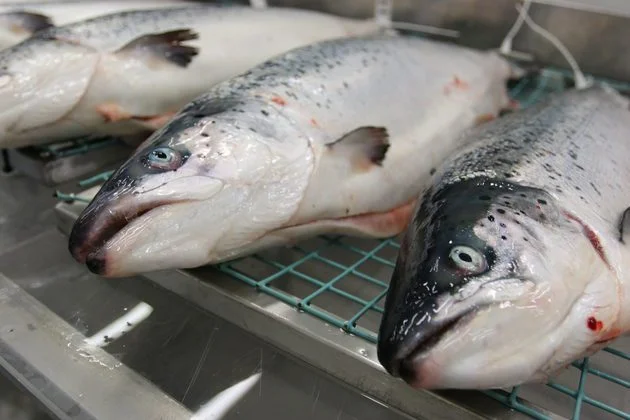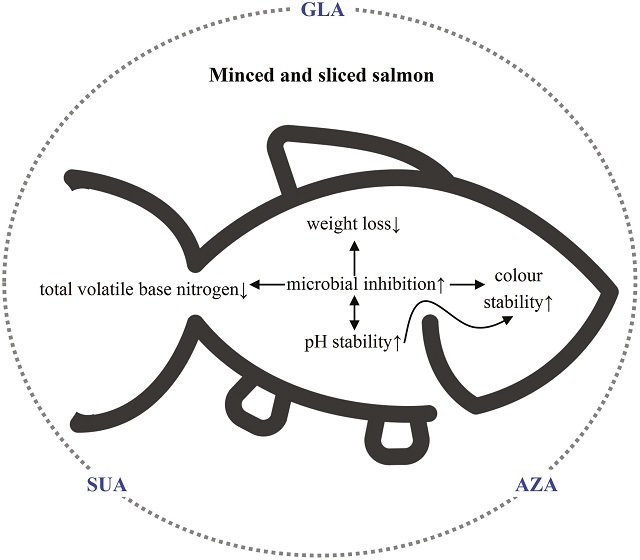
In a global aquaculture industry that handled 1.5 million tons of Norwegian salmon in 2022 alone, maintaining product freshness and quality from harvest to consumer is a top-tier logistical and economic challenge. Reliance on ice has been the norm, but a recent study published in Scientific Reports presents a promising alternative: sub-chilling in refrigerated seawater (RSW), a technique that not only drastically extends the salmon’s shelf life but also improves key quality attributes.
The research published by scientists from Nofima AS evaluates the storage of gutted Atlantic salmon in RSW at -1°C for 7 days, followed by post-processing storage also under sub-chilled conditions. The results suggest this method could transform the value chain, enabling transport to more distant markets without compromising quality and, crucially, reducing the need for ice.
What did the study entail?
To evaluate the effectiveness of this technique, the researchers compared three groups of Atlantic salmon:
- Group I (Ice Control): The traditional method. Salmon were stored on ice at 0°C for 7 days and, after being filleted and packaged in a modified atmosphere (MAP), were kept at 4°C.
- Group R (RSW for 4 days): Salmon were kept in refrigerated seawater (RSW) at -1°C for 4 days, followed by 3 days without ice, and then filleted, packaged (MAP), and stored at -1°C.
- Group S (RSW for 7 days): The main group of interest. Salmon were continuously stored in RSW at -1°C for 7 days and subsequently filleted, packaged (MAP), and kept at -1°C.
Throughout the experiment, quality parameters such as sensory and microbiological shelf life, drip loss, water-holding capacity (WHC), color, and enzyme activity were periodically analyzed.
Longer shelf life, better quality, and increased weight
The study’s findings demonstrate significant advantages of the RSW sub-chilling method, especially with the extended 7-day storage (Group S).
An unprecedented extension in shelf life
The most impactful result of the study was the extension of shelf life. While the ice-stored salmon (Group I) was considered spoiled after 14 to 18 days, the RSW-treated groups (R and S) maintained an acceptable sensory and microbiological quality for up to 49 days.
This achievement is due to better control of microbial growth. The counts of total psychrotrophic bacteria and hydrogen sulfide-producing bacteria (HSPB), which are responsible for off-odors, were significantly lower in the RSW groups. The combination of sub-chilling at -1°C and MAP with CO2 created a hostile environment for spoilage bacteria.
Stay Always Informed
Join our communities to instantly receive the most important news, reports, and analysis from the aquaculture industry.
Improving water retention and yield
Texture quality is fundamental for the consumer. The study revealed that salmon stored for 7 days in RSW (Group S) showed significantly better water-holding capacity (WHC) and water content compared to the ice-stored fish. In practice, this translates to juicier fillets with less drip loss, a crucial factor after packaging.
Furthermore, a direct economic benefit was observed:
- The ice-stored salmon (Group I) lost approximately 0.4% of its weight in 7 days.
- The salmon in RSW for 7 days (Group S) had a weight gain of 3.0%.
This gain is due to the absorption of water and a small amount of salt (which reached 0.3% in 7 days), a process that improves the water-holding properties of the muscle.
The role of sub-chilling and MAP packaging
The synergy between the sub-chilling temperature and MAP packaging was key. At -1°C, the solubility of carbon dioxide (CO 2) in the fish muscle increases. Since CO2 has antimicrobial properties, greater dissolution enhances its preservative effect, more effectively inhibiting the microorganisms that cause spoilage.
Controlling microbiology: The dominance of Photobacterium
A deep analysis of the microbiota revealed that while Photobacterium was the dominant bacterium in all groups, prolonged storage in RSW (Group S) was more effective at limiting the growth of other significant spoilage agents. Species like Brochothrix and Shewanella, known to spoil MAP-packaged fish, showed significantly lower levels in group S compared to group R at 49 days, which helps explain its superior shelf life.
Implications for the salmon industry
The results of this research open up a range of possibilities for the salmon industry:
- Less ice, more fish: The ability to store and transport salmon without ice after packaging frees up valuable space, allowing more products to be transported in each shipment and reducing logistical costs.
- Access to distant markets: A shelf life of up to 49 days allows producers to reach geographically distant markets with a product that maintains its freshness and premium quality.
- Superior quality and economic yield: The improvement in water retention and weight gain translate directly into a higher quality product for the consumer and a better economic return for the producer.
- The importance of control: The study underscores that the success of this technology depends on strict and constant temperature control at -1°C throughout the cold chain to avoid fluctuations that could negatively affect quality.
Conclusion: A promising future for salmon preservation
The study conclusively demonstrates that storing gutted salmon in refrigerated seawater at -1°C for 7 days, followed by sub-chilled storage, is a very promising technology. It offers a substantial extension of shelf life, improves product quality, and presents tangible economic advantages. By optimizing the cold chain and eliminating the dependency on ice, sub-chilling has the potential to redefine industry standards and take high-quality Atlantic salmon further than ever before.
Contact
Sherry Stephanie Chan
Department of Processing Technology, Nofima AS
Stavanger, Norway
Email: sherry.chan@nofima.no
Reference (open access)
Chan, S.S., Rotabakk, B.T., Løvdal, T. et al. Sub-chilling methods for Atlantic salmon with 7 days in refrigerated seawater and subsequent sub-chilled storage. Sci Rep 15, 24382 (2025). https://doi.org/10.1038/s41598-025-09371-7
Editor at the digital magazine AquaHoy. He holds a degree in Aquaculture Biology from the National University of Santa (UNS) and a Master’s degree in Science and Innovation Management from the Polytechnic University of Valencia, with postgraduate diplomas in Business Innovation and Innovation Management. He possesses extensive experience in the aquaculture and fisheries sector, having led the Fisheries Innovation Unit of the National Program for Innovation in Fisheries and Aquaculture (PNIPA). He has served as a senior consultant in technology watch, an innovation project formulator and advisor, and a lecturer at UNS. He is a member of the Peruvian College of Biologists and was recognized by the World Aquaculture Society (WAS) in 2016 for his contribution to aquaculture.




